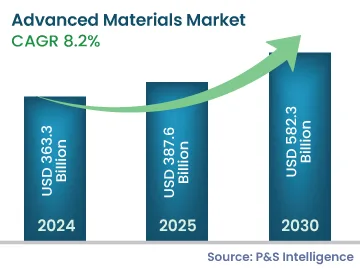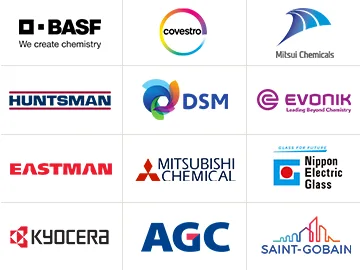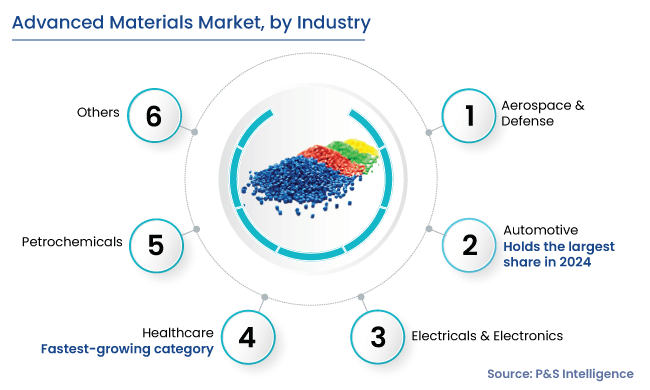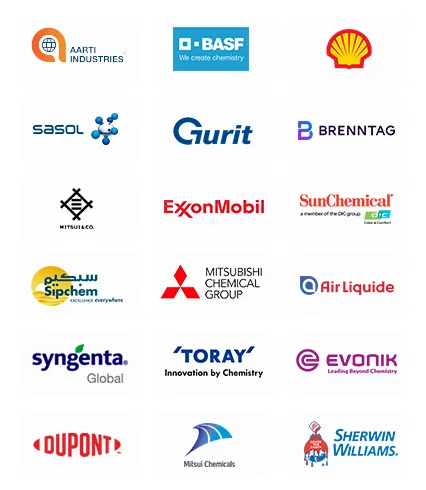Market Dynamics
Advanced Lightweight Materials
Advanced Polymers - Trends
The adoption of bio-based plastic products is the key trend around the world. Bioplastics are made from plants and other biological materials, instead of petroleum products. It is made from polylactic acid (PLA), which is extracted from corn and sugarcane; and polyhydroxyalkanoate (PHA), which is made from microorganisms. PLA plastic is generally adopted in food packaging, while PHA plastic is used in medical devices, such as sutures and cardiovascular patches. These materials have similar properties, such as strength, transparency, and scratch resistance. These properties, combined with tax benefits, no chance of a future ban, and easy dissolvability in the land, drives the demand for them.
Due to these benefits, several companies are involved in the production of bio-based plastics. For instance, Coca-Cola has collaborated with Tech Partners to produce plant-based bottle prototypes, excluding the cap and label. Approximately 900 prototypes of the world’s first recyclable PET plastic bottle, made from up to 30% plant-based materials, have been created. For this, they merged two molecules: almost 30% mono ethylene glycol (MEG) and 70% terephthalic acid (TPA). Moreover, in a new development in the plastic field, the University of Bath has created biodegradable plastics from sugar and carbon dioxide.
Various government regulations to reduce pollution are boosting the development of plant-based plastic products. This is because bio-based plastics take almost no time to dissolve in the environment.
Advanced Polymers - Drivers
The increasing utilization of advanced in the automotive sector to manufacture lightweight vehicles is boosting the growth of the market. Plastics give liberty in facilitating the design of interior and exterior parts. They are long-lasting and abrasion- and vibrant-resistant and have good haptic properties. They can be used for a variety of parts, such as cable insulation, carpets, wheel covers, and hoods and bumpers. The popularity of plastics in the automotive sector can be gauged from the fact that around one-third of the total parts in a car are made of polymeric materials. For instance, glass has been gradually replaced by non-breakable polycarbonate (PC) in vehicles’ window panes.
This is because they are easier to process and offer an improved price-to-performance ratio. Polymers have also received a big boost from the trend of lightweight vehicles to enhance fuel efficiency. It is estimated that around a 10% reduction in the weight of a vehicle causes a proportional reduction in fuel consumption. OEMs are rapidly using polymers to reduce the unwanted noise, vibration, and harshness (NVH) in vehicles and produce lighter yet stronger auto parts. The increasing disposable income, easy loan availability, and growing demand for vehicles globally augment the production of auto components, due to which the demand for polymers will remain high in the automobile sector. In addition, the surge in the demand for EVs is fueling the need for polymer composites for lightweight components, including battery packs.
Owing to the outstanding mechanical, electrical, and chemical properties, such as strength-to-weight ratio, elasticity, insulating and optical properties, and corrosion resistance, the application of polymers is versatile across many verticals. The adoption of lightweight materials in place of conventional materials, such as ceramics and metals, has increased in the automotive and other manufacturing industries.
Advanced Polymers - Challenges
The growing plastic pollution and rising costs hamper the market growth. Plastic is manufactured through fossil resources and is non-biodegradable. The dumping of plastic products in waterbodies and landfills has a long-lasting impact on the environment. The production of plastics at a global level is more than 460 million tons, and it contributes to greenhouse gas emissions. According to the Organization for Economic Co-operation and Development (OECD), plastic waste generated annually per person varies from 221 kg in the U.S. and 114 kg in European OECD countries to 69 kg, on average, for Japan and South Korea. Moreover, the costs of plastic recycling through mechanical and chemical procedures are increasing.
Advanced Composites - Trends
The utilization of composites in the construction sector is a major ongoing trend. Composite materials are widely being accepted in construction owing to their superior durability, design flexibility, and performance at elevated temperatures over traditional materials. Moreover, their low weight and high strength enable built structures to handle more stress per unit. This drives down the cost of construction as less material can be used without the structural stability being sacrificed. Composites can be used in construction applications characterized by corrosive environments, such as piping and ductwork, as they are water- and corrosion-resistant.
The rising focus on sustainable construction across the world, especially in the commercial segment, is likely to create a wide growth scope for composite material providers. This propels their utilization in windows, doors, exterior sidings, interior moldings, fences, and floorings.
Further, polymer–matrix composites (PMCs), especially fiber-reinforced polymers (FRP), are currently trending in construction applications. For instance, ceramic sinks, ceramic coatings, and marble kitchen counters are a few composite products that could witness increasing usage in the future with the growing demand for environment-friendly buildings.
Advanced Composites - Drivers
The rise in the demand for lightweight materials in the aerospace industry is boosting the growth of the market. The aerospace field demands lightweight and rigid materials for various applications, such as robots, high-speed machine parts, power transmission lines, helicopter rotor blade sleeves, fighter aircraft ventral fins, and jet engine fan exit guide vanes, where material weight significantly affects performance. Composites are versatile and used for both structural applications and components of all aircraft and spacecraft, from hot air balloon gondolas and gliders to passenger airliners, fighter planes, and the Space Shuttle.
The demand for advanced composites is increasing owing to their low weight, high impact resistance, and damage tolerance. The demand for weight reduction in aircraft is fueled by the heightening fuel prices, which, in turn, have triggered the need for higher fuel efficiency.
The three raw materials for advanced composites are carbon fiber, glass fiber, and aramid fiber. Fiberglass, the most-common composite used in aerospace parts, consists of glass fibers embedded in a resin matrix. Glass-fiber-reinforced composites have a relatively low elastic modulus, and they are commonly used in the interior of airplanes and parts such as wings, helicopter rotor blades, and engine ducts.
PMCs are also used in aircraft tires and interiors. Moreover, CMCs are widely used owing to their superior mechanical properties, high strength-to-weight ratio, and vast application scope. They are as tough as metals, but nearly one-third the weight of nickel alloys, and they can operate at 1,300 degrees Celsius. Therefore, they possess the ability to withstand extreme temperatures, while requiring less cooling air to be diverted from the thrust; as a result, engines run at a higher power.
Hence, the growth in the commercial aviation sector due to the surge in travel frequencies and improvements in the air transport network is fueling the demand for advanced composites for the manufacturing of airliners. Further, globalization has increased international trade and the number of people traveling by air, which has, in turn, aided the growth of the commercial aviation sector and resulted in a heightening demand for advanced composite materials.
The U.S. and Europe are the most-important aerospace and defense markets, with the major demand for aircraft being received by Boeing and Airbus. The superior performance characteristics of CMCs, such as durability, stiffness, wear resistance, a higher strength-to-weight ratio, increased coefficient of friction, and thermal conductivity, are likely to increase product sales over the forecast period. The combination or replacement of conventional materials with nano-composites or matrix composites not only reduces aircraft mass but also promotes overall reliability and efficiency.
Advanced Composites - Challenges
The high material cost and the requirement for specialized manufacturing processes restrain the market growth. Despite the benefits of CMCs, their usage in high-performance applications, such as jet fighters, spacecraft, racecars, missiles, aircraft engines, and similar high-temperature applications, is hampered by their significantly high costs.
The cost of these materials is largely influenced by that of . Additionally, ceramic production is a labor-intensive and highly specialized process, requiring processing silicon carbide fibers, along with a ceramic resin. This further requires adding a proprietary coating to manufacture the required CMC as per the specific application. Hence, the manufacturing processes and the need for skilled labor and the materials that go into producing carbon-fiber products make them expensive.
Establishing a well-defined supply chain structure is important for cutting down the manufacturing cost. Major players, such as GE, have already invested in the development of their supply chain in the U.S. for the components it needs for manufacturing aero engines.
Advanced Metals & Alloys - Trends
Technological advancement for the precision manufacturing of high-end intelligent equipment is one of the growing trends in the market. For instance, sawing equipment has been developed based on new technologies, such as cutting database, multi-fluid cooling, and automatic servo feed control, which has the same working precision and material consumption as laser and wire cutting, but offers more advantages in terms of dimensions and the efficiency of processing objects. This equipment plays an important role in industrial production. With its application in consumer electronics products, it has a significant demand in other industries, such as aerospace, construction, transportation, and equipment & tooling, too.
Moreover, the rapid development of other technologies, such as intelligent manufacturing, 5G communications, , and Industry 4.0, provides important support for the design of advanced equipment.
Advanced Metals & Alloys - Drivers
The growing usage of alloys in biomedical applications, especially in cardiology, dentistry, implants, and joint replacements, acts as a driver. The progress in medicine and material science has made possible the study, design, and application of numerous biomaterials in a wide range of medical fields, such as orthopedics, drug administration, dentistry, and skin tissue engineering.
Alloys, such as titanium, have high strength, good corrosion resistance, low density, non-toxicity, biocompatibility, and low-elastic modulus, which is why people and entities working with biomaterials have developed a strong interest in them.
Bones, if exposed to low stress, can undergo osteoporosis and resorption. To decrease or eliminate this effect, researchers are developing alloys with a low-elastic modulus. Low-elastic-modulus Ti alloys as a type of hard tissue implant biomaterial, including those containing TiNb, TiMo, and TiZr, were introduced for many advanced applications that demand stable performance. They can obtain long-term biological fixation through complete bone ingrowth. Additionally, Ti-based alloys exhibit a good combination of mechanical strength with a low elastic modulus; therefore, they are emerging as the first choice for biomedical applications.
Advanced Metals & Alloys - Challenges
The high production costs of nickel alloys are considered the biggest hurdle in their application. These materials are relatively expensive compared to other metals. This is because nickel is a relatively rare element, making it more expensive to produce, and nickel alloys are difficult to weld and repair.
Therefore, any rise in nickel prices has a disproportionately negative impact on the cost of high-nickel alloys. Inflated costs, potential shortages, or long lead times are the overall effects. Further, the conflict in Ukraine, as well as the sanctions that have followed, has exacerbated the problem. In addition, the drawdown on inventories does not show any signs of pausing, thus piling pressure on an already tight supply.
Advanced Ceramics - Trends
The adoption of advanced materials in industries is the key trend around the world. In line, advanced ceramics are adopted in almost every industry, such as aerospace, electrical & electronics, medical devices, telecommunications, automotive, and defense & security. These ceramics surpass conventional ones with their high melting point, hardness, high chemical stability, high oxidation resistance, high-temperature resistance, high corrosion resistance, and improved production efficiency.
Furthermore, market players are establishing new facilities to manufacture high-performance ceramic armor for military personnel, aircraft, and vehicles. For instance, in February 2023, SINTX Technologies Inc. announced that its 10,000-square-foot SINTX Armor facility in Salt Lake City is now operational.
Advanced Ceramics - Drivers
The growing applications of electro ceramics across industries are the major driver. They are used in a wide variety of electrical, optical, and magnetic applications. The first use of electro ceramics in the electrical industry stemmed from their high electrical resistivity.
Magnetic ceramics are oxide materials that exhibit ferrimagnetism, a type of permanent magnetism. This is why they find extensive usage in a variety of permanent magnets, transformers, telecommunication devices, information recording systems, microphones, and speakers.
Moreover, capacitor dielectric and piezoelectric ceramics are used to manufacture energy generation and storage devices due to their poor conductivity of electricity, accuracy, and high stability. Additionally, advanced ceramics are utilized to make components for automobiles, including spark plug insulators, catalysts & catalyst supports for emission control devices, and sensors of various kinds.
Similarly, these materials are used in the aerospace sector as a substitute for metals, to reduce the weight and increase the efficiency of components and complete devices. Smooth and typically free of any surface imperfections, they offer higher speeds to military jets. Moreover, they can withstand the extremely high temperatures generated in the core of jet engines.
Therefore, the fact that aerospace companies are receiving giant orders for aircraft engines is expected to add fuel for the growth of the advanced ceramics market. For instance, in February 2023, Air India Ltd. ordered 20 GE9X and 40 GEnx-1B engines, along with signing a multi-year TrueChoice engine servicing agreement, with GE Aerospace. This comes at the back of the mammoth 470-aircraft order India’s national airline placed with both Boeing and Airbus earlier that month.
Further, the main applications of ceramics in the healthcare industry include knee and hip replacements, as well as dental restorations. Additionally, bio ceramics are used in healthcare for everything from artificial bones and joints to dental materials.
Advanced Ceramics - Challenges
One of the key restraints in the adoption of advanced ceramics is their higher cost, because of their expensive manufacturing method. They require ultra-high temperatures for sintering, which increases their overall manufacturing cost. Moreover, the availability of alternatives to ceramics in the market is another restraint.





